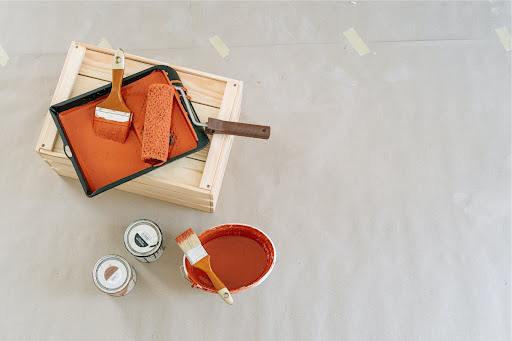We’ve all seen the home improvement shows on TV, a couple or few brothers or even cousins buys a neglected house, turns it into something beautiful and sells it for a profit, all within a few months.
Reality check; It’s not as easy as it looks. People make money flipping houses every day, but the secrets to success start with really knowing what you’re doing. And finding a good house to flip is much harder now because the market is so strong for bargain-priced homes.
“It is difficult to find a house to flip that makes economic sense,” says Mindy Jensen, community manager at BiggerPockets.com, an information hub and networking platform for real estate investors. “You’re competing with retail buyers. They’re buying the ugly houses because there’s nothing else.”
Brian Peavey’s company, Profit Share, uses direct mail, door hangers, social media, real estate agents and personal connections to find homes to flip in Boise, Idaho. To make its offer more attractive to sellers, Profit Share promises an additional payment once the flip has sold.
When his company’s offer is rejected in favor of a higher offer, Peavey puts in a backup offer in case the first deal falls through. “We’ve had multiple houses that we’ve ended up on second position on,” he says, eventually closing the deal.
Don’t believe those late-night infomercials that say you can get into house flipping with no money.
“Nobody is going to hand you a house for free, and you can’t go to Home Depot and they’ll give you your supplies for free,” Jensen says. “If you are using credit cards and have no money, you can get into trouble quickly.”
Check out the history of any property you buy, but don’t forget to research your business partner, too.
To get a conventional investor mortgage, you often need at least 25 percent down, though a good mortgage broker might find other options, including a lower down payment or a loan that provides some money for repairs. Hard-money lenders will lend to nearly anybody, but interest rates are high. Borrowing from friends and relatives is another option. “If you get with a very good mortgage broker… they may introduce you to lenders who have some unique programs,” says Steve Udelson, president of online real estate at Altisource, which offers services to consumers, investors and the real estate industry.
Another major key to success as a flipper is accurately estimating both cost and timeline. That doesn’t mean there won’t be surprises, but you want to calculate the true cost of getting the property ready for sale. That includes purchase price, repair costs, marketing expenses and carrying costs, such as mortgage, insurance and utility payments.
When you buy a home, you don’t always know what’s behind the walls: mold, asbestos, water damage, antiquated electrical lines, foundation issues or crumbling plumbing pipes. But, if you understand construction and issues faced by older houses, you can make a more accurate estimate. “When you get into these problems and don’t know what you’re doing, these problems can swallow your profit and put you under in a heartbeat,” Peavey says.
When you prepare to sell, you can’t list at a higher price just because the job cost you more than you had anticipated. “The house is only going to be worth what the market will bear – what someone will pay for it at the end of the flip,” Jensen says.
Here are nine secrets of successful flippers.
- They buy at the right price. If you buy a house at full retail price then spend $25,000 on improvements, clearly you won’t make a profit. You want a house to which you can add value and sell for more than you spend. Especially in today’s market, you may need to search hard for a house that will make a profitable flip. “You make your money when you buy,” Jensen says.
- They have access to cash. A traditional lender will want at least 25 percent down and also have the best rate. A hard-money lender, who gives a short-term mortgage based upon the value of the asset, may not care about your credit and will lend enough to buy and rehab, but he or she will charge 10 to 15 percent interest or more. You may get lucky and find a private lender who trusts you enough to give you a loan for acquisition and repair costs at a reasonable rate, but that often takes a track record unless you have relatives with money.
- They make accurate cost estimates. Before you decide whether a house will make a good flip, you need to know how much it will cost to repair it, market it and hold onto it during the process, which means you also need an accurate timetable. When you estimate tile costs, don’t just look at the $2-per-square-foot price tag on the tile, but also include the cost of labor, mortar, grout and tools. Don’t forget taxes, insurance, mortgage payments, real estate commissions and marketing costs. “All of a sudden your $10,000 budget is $25,000 in reality,” Jensen says. “It costs a lot of money to flip a house.”
- They hire good contractors. Finding a good, reliable contractor to work with you on flipping a house isn’t any easier than finding a contractor to renovate your kitchen. Start looking before you find the house. Ask for references, call those references and look at completed projects. “This is going to be the hardest part of the whole thing,” Jensen says. “I have found three in my whole flipping career who were amazing. I have hired a lot more contractors.”
- They buy in the right neighborhoods. When you don’t have a lot of money, the tendency is to assume that an inexpensive house anywhere is a good option. It isn’t. You want a neighborhood that is safe, where values are rising and where people want to live. “Not every house makes a good flip,” Jensen says. “Just because the house is priced low doesn’t mean it’s a good value. You’re not going to be able to force those neighborhoods to be good.”
- They do work themselves – when they can do it well. One way to avoid dealing with contractors is to do the repair work yourself. That can be a decent option if you’re good at home repairs. Calculate how quickly you can do the work yourself vs. how much you would have to pay someone else. Your time has value, too. But bad renovations turn off prospective buyers.
- They don’t over improve. If you buy a house in a neighborhood where all the other homes have laminate countertops and linoleum floors, you may not get your money back if you add custom wood cabinets, expensive wood floors and marble countertops. “You don’t want to be the nicest house in the neighborhood,” Jensen says. “You’re not going to sell a $300,000 house in a $175,000 neighborhood.”
- They add special touches that don’t cost much. Spend a little more on kitchen faucets, a new doorbell, lighting or plumbing fixtures, Peavey said. Wainscoting, chair rail and crown molding all look nice but don’t cost much. “You sell the sizzle of the steak rather than the nutrients of the steak,” he says.
- They sell their homes quickly. Every day the house sits unsold, you lose money. You need a strong marketing plan, whether you use a real estate agent or list it yourself. And you’ve got to price the property to sell based on market values, not what you’ve invested in it for improvements. “If you list too high, the house won’t sell,” Udelson says. “If you list too low, you leave money on the table.
By Teresa Mears, Contributor





